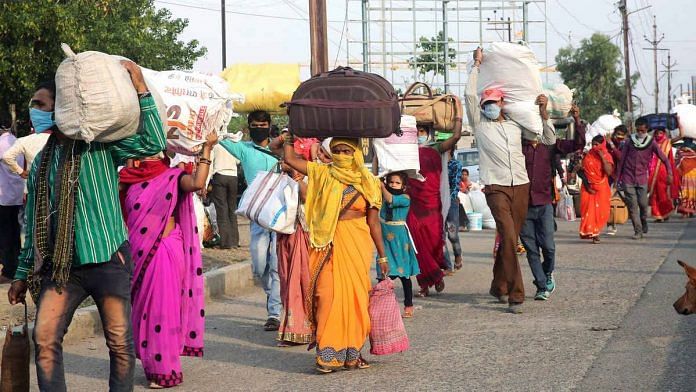New Delhi: New research has found that the coronavirus pandemic has reduced growth in the global middle class while poverty has increased sharply. An analysis conducted by Pew Research Center, released Thursday, found that the global middle class included 54 million fewer people in 2020 than the number which was projected prior to the pandemic.
Before the pandemic, 1.38 billion people were expected to be included in the global middle class in the year of 2020. The global outbreak is expected to have decreased this number to 1.32 billion.
Middle class in India also decreased, by 32 million, due to the economic downturn exacerbated by the pandemic.
From 2011 to 2019, the report estimated that the middle class population globally had increased to 1.34 billion from 899 million. Further, it was expected to increase by 54 million annually on average.
“The pandemic is estimated to have erased a year of growth, leaving the global middle-class population nearly unchanged from 2019 to 2020,” the report said.
In India, the 32 billion reduction in middle class population is significant considering that 57 million were added into this bracket between 2011 to 2019.
Also read: India saw world’s largest reduction in poverty from 2005-16, says Oxford-UN study
Global poverty rate increases by 10.4%
The coronavirus crisis also exacerbated the state of poverty in the world. The number of ‘global poor’ are estimated to have increased to 803 million in 2020, which is a significant increase from 672 million, the pre-pandemic prediction. The global poverty rate also increased to 10.4 per cent last year after witnessing a steady decline over the years. It was previously expected that the poverty rate would decrease to 8.7 per cent in 2020.
From 2011 to 2019, global poverty decreased at an average rate of 49 million each year, wherein the number of global poor fell to 691 million from 1.10 billion.
“The pandemic, by adding 131 million to the rank of the poor, has set the progress on poverty back by several years, and the poverty rate is estimated to have increased from 9 per cent in 2019 to 10.4 per cent in 2020,” the report said.
The report maintained that this sharp rise in global poverty was owing to the fact that many under the low income tier prior to the pandemic were living on the margin of poverty.
For the purpose of this report, populations in global regions were divided into five groups — poor, low income, middle income, upper-middle income and high income. The poor are estimated to survive on less than $2 daily, low income between $2.01 to $10, middle income between $10.01 to $20, upper-middle income between $20.01 to $50 and high income on more than $50 daily.
Also read: As India returns to positive growth, it must think why it can’t remove poverty like China has
75 million: India’s poverty growth
Owing to Covid-led recession, the number of people in poverty in India were estimated to have increased by 75 million. This accounted for almost 60 per cent of the global increase in poverty.
From 2011 to 2019, the number of poor in India was estimated to have reduced to 78 million from 340 million. However, in 2020, the number increased by 75 million which “claws back several years of progress on this front for India”.
Advanced economies see middle class tier increase
South Asia saw the greatest reduction in the number of middle class and the largest ‘expansion’ in poverty in 2020. This could be attributed to South Asia experiencing sharp decrease in economic growth during the pandemic.
In January 2020, the World Bank had estimated that South Asia would experience a 4.3 per cent increase in GDP in 2020. But in January 2021, it was found that South Asia’s GDP reduced by 7.8 per cent in 2020.
Before the pandemic, nearly half of the world’s middle class population — which is 672 million out of 1.38 billion — was estimated to live in East Asia and the Pacific, which also includes China. Latin America and the Caribbean accounted for 191 million, Europe and Central Asia were home to 183 million, while South Asia saw 123 million.
However, the middle class in advanced economies was estimated to have increased by 16 million. The report predicted that this could be due to a ‘drop-off’ in the high-income tier in these countries.
(Edited by Manasa Mohan)
Also read: Covid crisis could drive up global poverty for the first time since the 1990s




Vikas is happening. Vikas in poverty, Vikas in illiteracy, Vikas in bigotry, Vikas in ignorance.